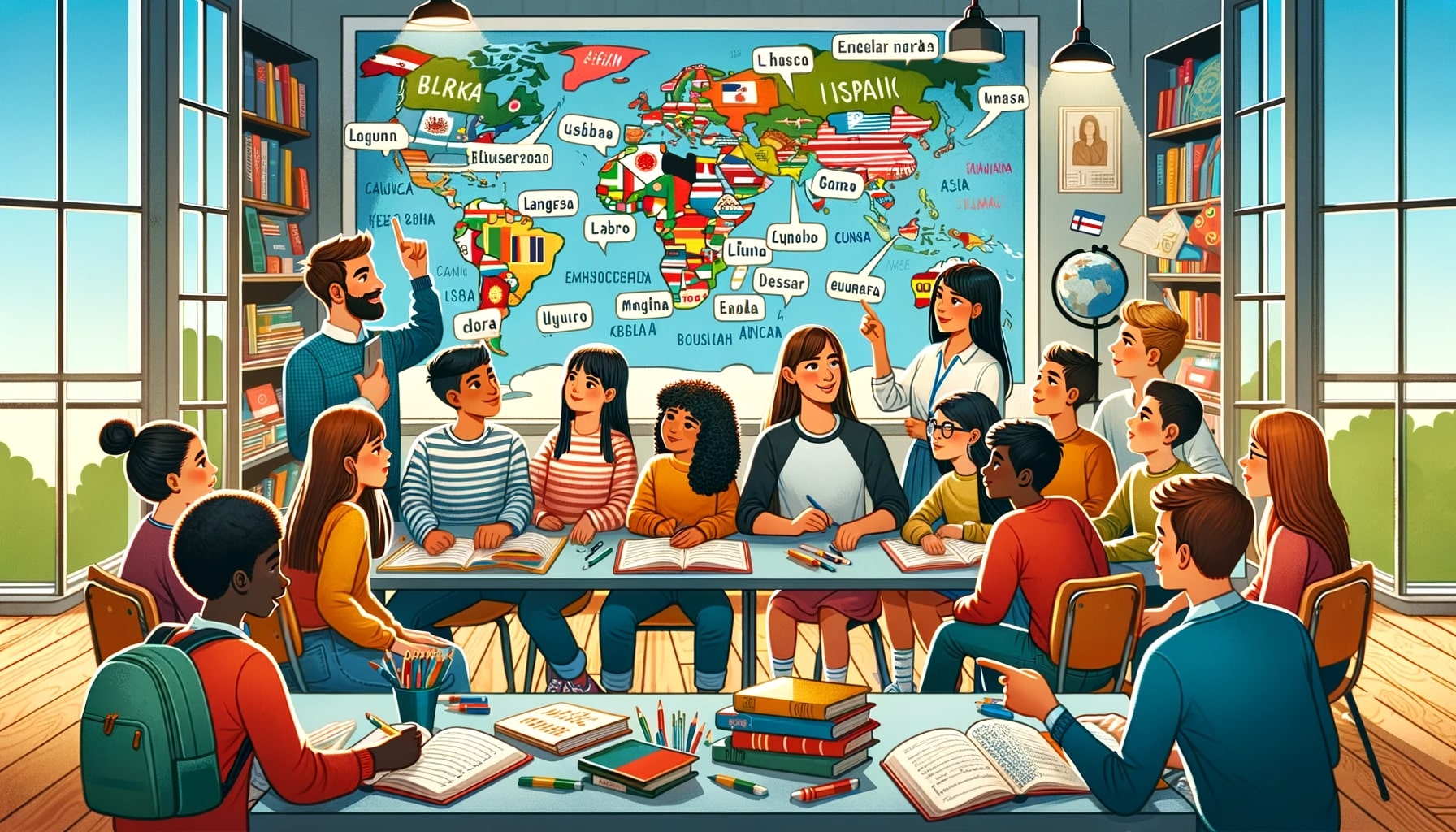Let’s dive into the fascinating realm of bilingualism and how it is becoming a formidable ally in fostering creativity. We’re going to examine how bilingual schools are sculpting the creative problem solvers of the future, with a special shout-out to the innovative program at VISD Choice Schools in Victoria, TX.
The Bilingual Advantage: More Than Just Words
Bilingualism, or the ability to converse in two languages, has been linked to numerous cognitive benefits. It’s not just about being able to order a croissant in perfect French or negotiate a business deal in Mandarin. The impact of bilingualism stretches beyond linguistic prowess, enhancing various cognitive abilities from problem-solving to creativity.
Setting the Stage for Creativity
Researchers have been intrigued by the association between bilingualism and creativity. They’ve found that individuals proficient in two languages often outperform their monolingual counterparts in problem-solving tasks. But what makes bilingual individuals more creative?
The Bilingual Brain: A Creative Powerhouse
Bilingualism fosters a unique cognitive environment that promotes creative thinking. Bilingual individuals often switch back and forth between languages, a mental workout that enhances cognitive processes associated with creativity. We’ll delve into this intriguing relationship later, but first, let’s understand what we mean by creativity.
Creativity: It’s Not Just About Paintbrushes and Poetry
Creativity, often misconstrued as a trait exclusive to artists and poets, is a universal cognitive ability that allows us to generate novel and valuable ideas. It’s a two-pronged process involving divergent and convergent thinking.
Divergent Thinking: The Idea Generation Machine
Divergent thinking, as the name suggests, involves diverging from the conventional path. It’s about generating multiple solutions to a problem, measured by fluency, flexibility, and originality4. Think brainstorming sessions where ideas are bouncing around like ping pong balls.
Convergent Thinking: The Idea Selector
On the flip side, convergent thinking is about narrowing down those multiple ideas to find the best solution. It’s like sifting through those ping pong balls to find the golden one.
The Bilingualism-Creativity Connection: Diving Deeper
Now, let’s return to the intriguing relationship between bilingualism and creativity. Researchers hypothesized that high-proficient bilingual individuals would exhibit higher convergent and divergent thinking than low-proficient bilinguals. But how does bilingualism influence these two types of thinking?
Cognitive Inhibition: The Convergent Thinking Catalyst
Processing a new language requires the inhibition of the dominant language, which over time may enhance cognitive inhibition. This ability to suppress irrelevant information aids in convergent thinking. By effectively inhibiting irrelevant thoughts, bilingual individuals can focus their cognitive resources on finding the best solution.
Cognitive Flexibility: The Divergent Thinking Booster
Similarly, bilingual learning can promote cognitive flexibility, the ability to switch between different task states and mental stereotypes. This flexibility facilitates divergent thinking, as individuals are more likely to generate a variety of ideas when they can flexibly switch between different perspectives.
Consequently, bilingual learning can foster both convergent and divergent thinking by promoting stronger cognitive inhibition and cognitive flexibility2.
A Tale of Two Bilingual Groups: An Empirical Study
One study classified Chinese-English bilingual university students as high-proficient and low-proficient based on their performance in the National English Test for College Students2. The high-proficient group scored higher on tests measuring cognitive inhibition, cognitive flexibility, and both convergent and divergent thinking2. This research provides strong empirical evidence for the relationship and mechanism between bilingual learning and creativity.
The Bilingual Advantage: A Double-Edged Sword?
While bilingualism appears to be a magic bullet for creativity, it’s not without its complexities. Some studies have found no significant differences between bilingual and monolingual children in divergent thinking tasks. Others suggest the association between bilingualism and creativity may vary based on cultural context.
Moreover, the boost in creativity due to bilingualism may be contingent on the type of creativity task. For instance, a study found that high-proficient bilinguals performed better on convergent thinking tasks but not on divergent thinking tasks.
The Role of Bilingual Schools in Fostering Creativity
The link between bilingualism and creativity has significant implications for education. Bilingual schools, such as VISD Choice Schools in Victoria, TX, are leveraging this advantage to nurture the creative problem solvers of tomorrow. By immersing students in a bilingual environment, these schools are simultaneously enhancing their linguistic skills and creative potential.
Final Thoughts on The Future of Bilingualism and Creativity
In conclusion, bilingualism offers a unique pathway to creativity, enhancing both divergent and convergent thinking through cognitive inhibition and cognitive flexibility. As we continue to live in an increasingly multicultural and multilingual world, the importance of bilingualism in fostering creativity becomes more apparent.
However, further research is needed to understand the subtleties of this relationship. It’s crucial to explore how cultural diversity, proficiency levels, and other factors influence the bilingualism-creativity link. As we continue to delve into this fascinating subject, one thing is clear: bilingualism is not just about mastering two languages—it’s about fostering creativity, problem-solving, and cognitive flexibility in our increasingly diverse world.
Footnotes
- Xia T, An Y, Guo J. Bilingualism and creativity: Benefits from cognitive inhibition and cognitive flexibility. Front Psychol. 2022 Nov 3;13:1016777. doi: 10.3389/fpsyg.2022.1016777. PMID: 36405189; PMCID: PMC9670109.
- Front. Psychol., 10 November 2011 Sec. Cognition volume 2 – 2011 | https://doi.org/10.3389/fpsyg.2011.00273










